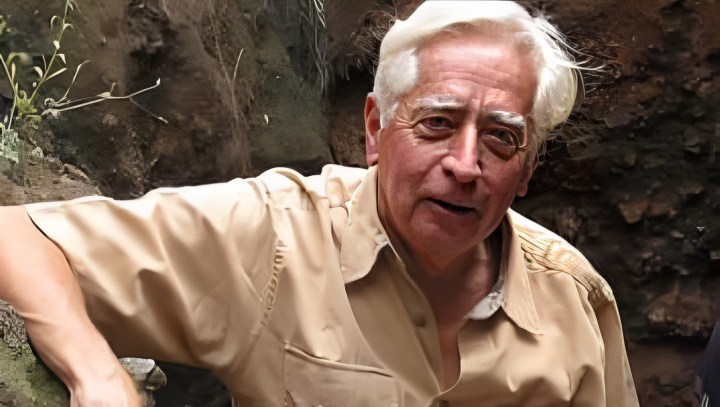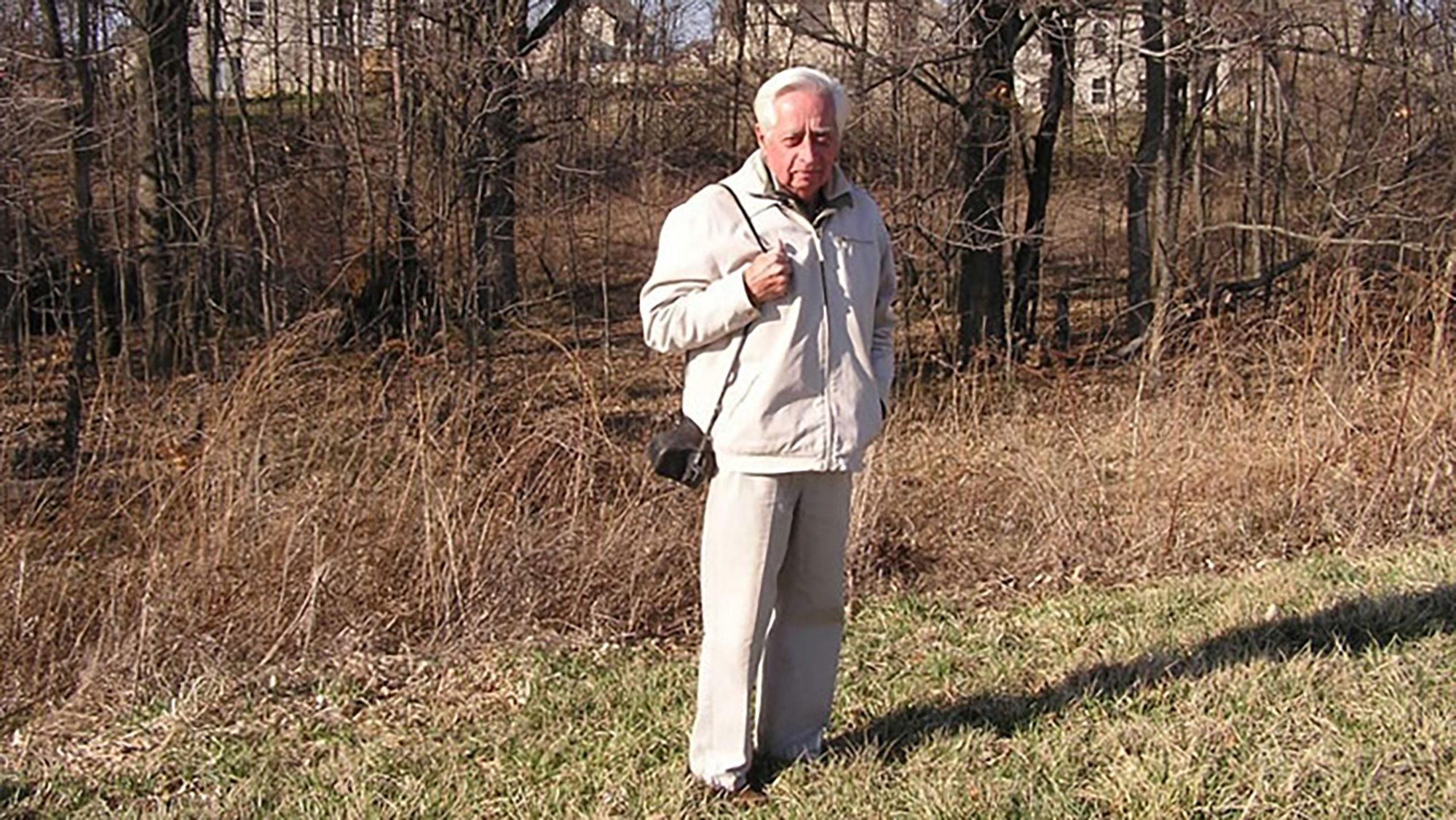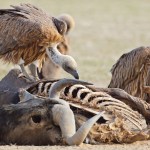OBITUARY
Renowned South African palaeontologist Bob Brain dies at 92

You have to have fun with science, Bob Brain would tell colleagues. It was that joy that led Brain to give science a picture of our ancestors as evolving individuals seeking a technological edge.
By 1981, Bob Brain’s palaeo whodunnit was ready to be published and it was going to change palaeoanthropology forever.
Brain had studied the wear patterns and breakages on the fossilised bones he had found at the Swartkrans cave in the Cradle of Humankind for a decade and a half.
Besides fossils, his study into how bones decay was wide-reaching. He had even carefully observed how captive cheetahs fed, noting the traces their fangs left on the bones.
In 1981 Brain revealed his findings in the book, The Hunters or the Hunted? An Introduction to African Cave Taphonomy.
The book was the death knell of the Osteodontokeratic hypothesis – the belief that the fossilised bones found in cave sites across the Cradle of Humankind, close to Johannesburg, were the implements used by our ancestors to kill and satisfy their “hyper carnivore” diets.
Long bones were clubs and skull caps drinking vessels, this hypothesis by Prof Raymond Dart suggested.
Brain’s work showed that the bones left in these caves were not the relics of cannibalistic, bloodthirsty apemen, but rather the remains of victims.
Predators
Through his pioneering work in taphonomy – the study of how organisms decay and fossilise – Brain proved that the bones had been taken to the caves by predators that shared the prehistoric landscape with our earliest ancestors.
“He was one of the founders of the science of taphonomy and a great person,” recalls British anthropologist Prof Chris Stringer.
“South Africa has lost one of its greatest and most admired scientists.”
Brain died on Tuesday, in Pretoria aged 92, and those who knew him remember him as the determined scientist with the eye and resolve of a great detective.
“This is a detective story, but rather an odd one,” is a line Brain used to introduce his book, The Hunters or the Hunted?
Being a good detective, Brain even compiled a lineup of likely suspects that he suggested feasted on our ancestors all that time ago.
They included a long dagger-fanged cat called Megantereon, a speedy long-legged hunting hyena, an early lion, a “false” sabre-toothed cat called Dinofelis, and the leopard.
From the fossil trail, Brain surmised that Dinofelis might have evolved into a specialised primate killer, sneaking into caves at night and picking off sleeping hominids.
It was a theory that famed writer Bruce Chatwin ran with after he read Hunters or the Hunted? and came to South Africa to meet Brain.
In his book, The Songlines, Chatwin called the cat the Prince of Darkness, a monster that scared our ancestors so much that it left a psychological scar that today has manifested into a fear of the dark and a need to invent demons and monsters to explain a deep-seated terror of which we have no memory.
Later Brain would change his mind and say that the most likely suspect was the leopard.
Charles Kimberlin Brain was born in what was then Salisbury in Southern Rhodesia. From an early age, he was known simply as Bob and had an early introduction to natural history through his father, who was an entomologist and his mother, a botanist.
After matriculating from Pretoria Boys High he headed to the University of Cape Town to read for a BSc degree with geology and zoology.
In 1955 Brain married Laura who was then working as a geologist at the CSIR, and for the decades to come, she had a hand in the research and experiments.
By 1968 Brain was the director of the Transvaal Museum, now the Ditsong National Museum of Natural History, and being in Pretoria he had the opportunity to study the fossils that were being found in the caves in the Cradle of Humankind.
Early use of fire
Several years after the release of Hunter or the Hunted?, Swartkrans was to be the site of Brain’s next big discovery. The excavation of burnt bone and charcoal led the palaeoanthropologist on a quest to see if this was evidence of our ancestors using fire.
“It was so typical of how he operated… he wasn’t just satisfied with the find,” says retired palaeontologist Prof Bruce Rubidge.
“He then sectioned the charcoal and tried to work out at what temperature that wood was burnt.”
The fire remains were dated to just over a million years old.
“So he argued that these fires were not the result of natural grass being burned, but were probably a matter of hominins collecting burning branches and bringing them into the cave to ward off predators, especially leopards.
“The controlled use of fire by Homo was an evolutionary advantage,” explains palaeoanthropologist Prof Francis Thackeray, who worked with Brain for many years.
Museum exhibits
It was Brain who gave a young Thackeray his first job as a lab assistant at the Transvaal Museum. Here, Thackeray would see Brain’s other talent, that of being a skilled museum exhibits designer, at a time when he had to manoeuvre around the apartheid regime’s anti-evolutionary beliefs.
“So instead of using the word evolution in the museum exhibition displays, Bob Brain called the exhibition Life’s Genesis One and the second exhibition Life’s Genesis Two. He didn’t use the word evolution whatsoever, but he did have evolutionary trees showing the development and the diversification of animals through that particular exhibition,” says Thackeray.
Away from the dig sites and the museums, the Brain household in Irene, Pretoria, had a reputation for being a fun place to visit. Guests would be welcome for lunch. Laura was known for her tasty pumpkin soup, the ingredients coming straight from the garden.
“It was just delightful going there. There was always this lovely banter around the table. And Bob used to sit and laugh,” says Rubidge’s wife, Marina.
After he retired, Brain embarked on a new adventure. He would head out into Namibia, alone in a 1400 Nissan bakkie, and collect limestone.
Earliest signs of predation
Back in Irene, Laura would cut and grind the rock samples into thin sections. Then, using a microscope, Brain would hunt for prehistoric multicellular organisms that lived around 700 million years ago. He was looking for the earliest signs of predation.
Brain did find what is claimed to be the oldest animal fossil that lived between 760 and 550 million years ago.
Otavia antiqua was an early sponge-like animal, just millimetres in size.
Those who worked with Brain remember something he would repeatedly stress: You had to have fun with science.
His philosophy even evolved into a prize called the Laura and Bob Brain Most Fun With Fossils Award.
It was the joy of research that led Brain to give science a picture of ancestors that weren’t mindless killers, but instead evolving individuals seeking a technological edge. His keen eye has allowed science to peer back even further into a time when life was new and had yet to become the complex organisms we know today.
“So, you know, his legacy will go on because he was a very important personality in science in South Africa,” says Rubidge. DM





















Wonderful obit, Shaun. I was privileged to have a long association with Bob — I was appointed to his post in the Queen Victoria Museum when he left to join the Transvaal Museum back in 1964/65, and then an even longer association with him when I was director the Bernard Price Institute for Palaeontological Research at Wits University, and Bob was a member of our Board of Control. Later still I was appointed to the Board of Trustees of the Transvaal Museum, where of course Bob was the ever-innovative Director. He is quite simply one of the most creative, curious, intelligent, encouraging people I have ever known, and at the same time he is one of the nicest human beings it has ever been my privilege to call friend. He will be greatly missed by many, many people, especially by me. Thank you for a great obit — it did him due credit. Mike Raath